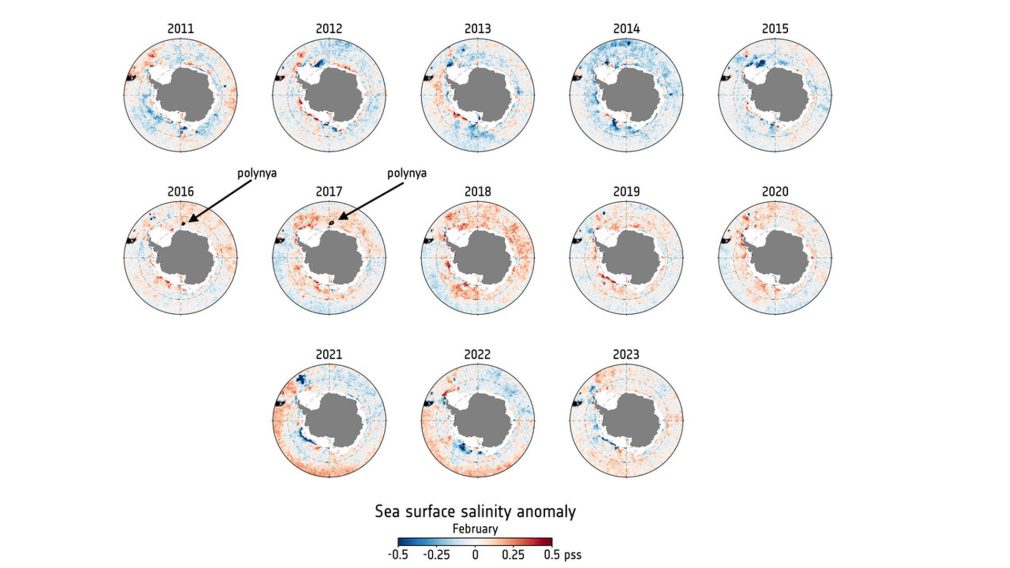Using data from ESA’s SMOS satellite, scientists collaborating in the Southern Ocean Freshwater (SO Fresh) project have discovered a surprising reversal in the Southern Ocean: instead of becoming fresher as Antarctic sea ice melts, surface waters are growing saltier, particularly south of 50° S, with salinity rising even as ice cover rapidly retreats.
This unexpected trend weakens the natural stratification that normally traps deep-ocean heat, enabling warmer waters to melt ice from below and allowing the emergence of long-dormant features like the Maud Rise polynya. The implications are profound, potentially disrupting ocean currents, accelerating global warming, and endangering polar ecosystems.
Read the scientific paper published on the Proceedings of the National Academy of Sciences (PNAS), and the full story on ESA EO pages.
A. Silvano, A. Narayanan, R. Catany, E. Olmedo, V. González‐Gambau, A. Turiel, R. Sabia, M.R. Mazloff, T. Spira, F.A. Haumann, & A.C. Naveira Garabato, Rising surface salinity and declining sea ice: A new Southern Ocean state revealed by satellites, Proc. Natl. Acad. Sci. U.S.A. 122 (27) e2500440122, https://doi.org/10.1073/pnas.2500440122 (2025).
Featured image : Sea-surface salinity around Antarctica. Credits: University of Southampton

